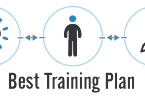The "human flag" is an anti-gravity, jaw dropping, bicep-bursting feat of neuromuscular strength and skill that will humble even the strongest and impress everyone... even if they don’t act impressed!
The human flag, in a nutshell, requires suspending your body out horizontally from a pole or horizontal bars, using only your hands as the base of contact! It's quite the party trick, but can you actually teach your clients to do a human flag?
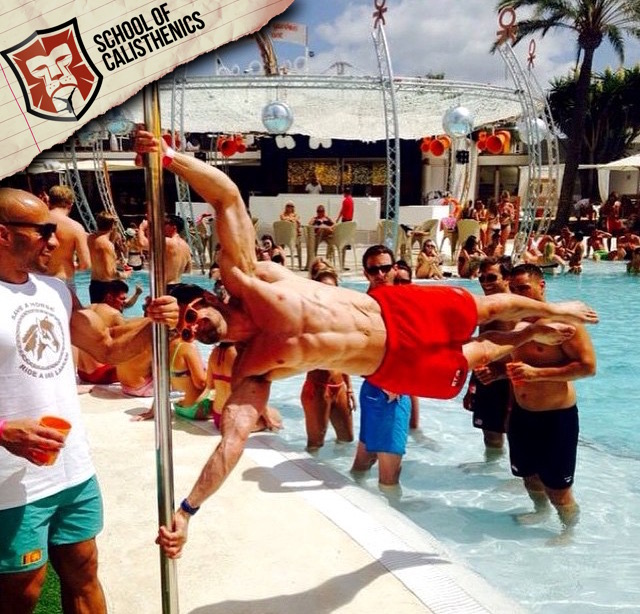
"That’s way too advanced. A human flag would be ‘impossible’ for my clients, and even for me!"
Is that what you're thinking? Well, everything is "impossible" until you do it for the first time! Please don’t think that this is impossible for you or your clients. Difficult? Yes. But impossible? No!
It personally took me 3 months to achieve the human flag long enough to take a decent photo (our initial rules for how long you needed to be able to hold a movement before you could claim you could do it!). The “stupid” comments evolved into “impressive!” Although, depending on your definition of stupid, you might still call a man hanging horizontally off a pole “stupid!”
Don't always believe in fate but some things can't be explained! Impossible is nothing!! #motivation #quotes pic.twitter.com/2AfHmfOQdA
— Ryan J (@RyanJacovides) May 5, 2016
Since that first human flag at the School of Calisthenics, we’ve been honing our techniques, understanding, and exercises. We used not just our own failures and practical journey towards a human flag, but also our understanding of exercise science, as Professional Strength & Conditioning coaches with Paralympic athletes. This has helped us to develop a progressive framework to teach the human flag, and other calisthenics movements, to anyone.
At a workshop series we ran last year, we took a number of absolute beginners, potentially just like you and your clients, from zero to human flag heroes in only 7 weeks! Even we were surprised at how quickly some of them developed. This video shows the 7-week transformation:
What Does It Take to Learn How to Do a Human Flag?
Besides hard work, determination, and consistent training, which must be a given to achieve anything "impossible" like a human flag, you might ask, "What are some of the things that you need to develop to help learn the human flag?"
Hard work and determination are NOT the secrets to success. They are merely prerequisites.
Most people assume it’s a feat of great core strength, and yes, the core is involved, but it’s way more specific than that....
In regards to core, you need to keep your pelvis and torso in a straight line and locked in, but the main area of weakness I see, and have experienced myself, is lacking oblique strength. It’s not those deep core stabilizers (Transverse Abdominis, Multifidus and Pelvic Floor) that feel like they are about to rip apart. It’s those top side obliques that you’ll feel straining to keep your hips up and legs out horizontally. Trust me!
However, your obliques are not even the most important aspect of strength to develop. The base of support provided by the arms, and ultimately the shoulders, is the foundation of the human flag. Get this right with the bottom arm pushing and the top arm pulling, and you are well on your way to that first human flag!
5 Steps to Human Flag Glory!
1. Hand Positioning
We see all over Instagram, Twitter, and Facebook, "Failed Human Flag" attempts, because all to often people are using the wrong hand position!
The bottom hand should grip with palm open and thumb pointing down towards the floor. The top hand is in a traditional overhand grip you’d use on pull-ups, again the thumb pointing down towards the floor. Easy to remember: "thumbs down" gets a thumbs up from us!
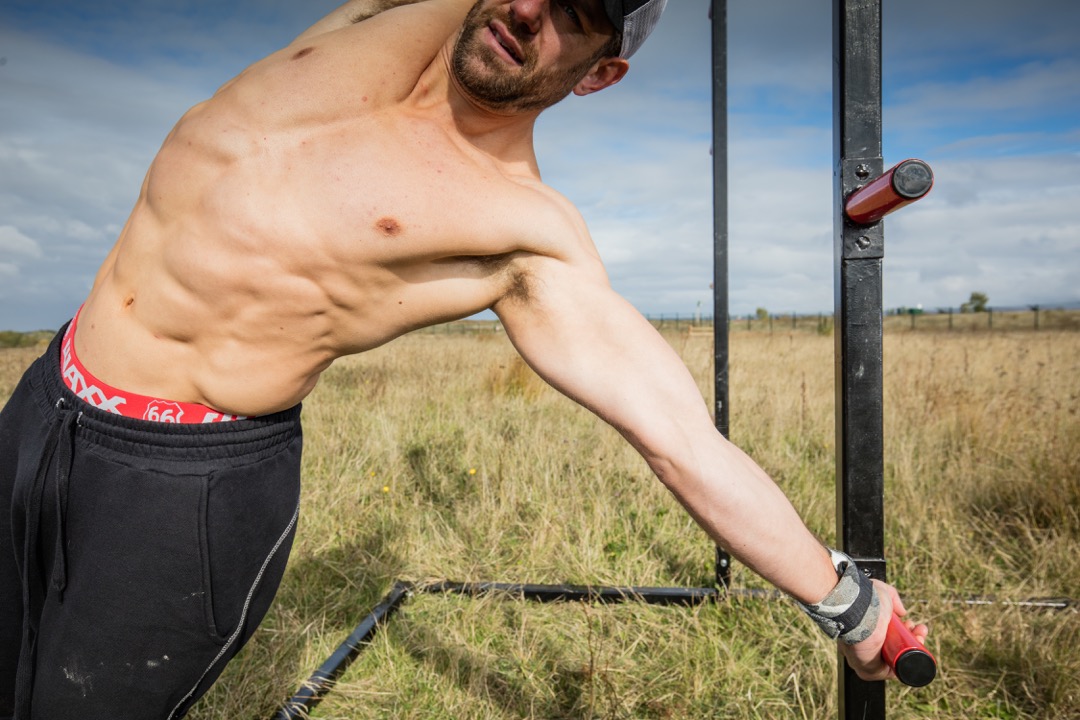
2. Movement Patterning
Firstly, before you even worry about being strong enough in the shoulders or obliques, you must teach your neuromuscular system the push and pull action of opposite arms. When was the last time you pushed maximally with one arm, whilst pulling with all your strength with the other?
It’s an activation pattern that needs to be learned right at the start and is something that you shouldn’t rush. We practice the push and pulling action in what we call the "vertical flag," where you’re using your feet as support, whilst practising that push and pull with opposite arms.
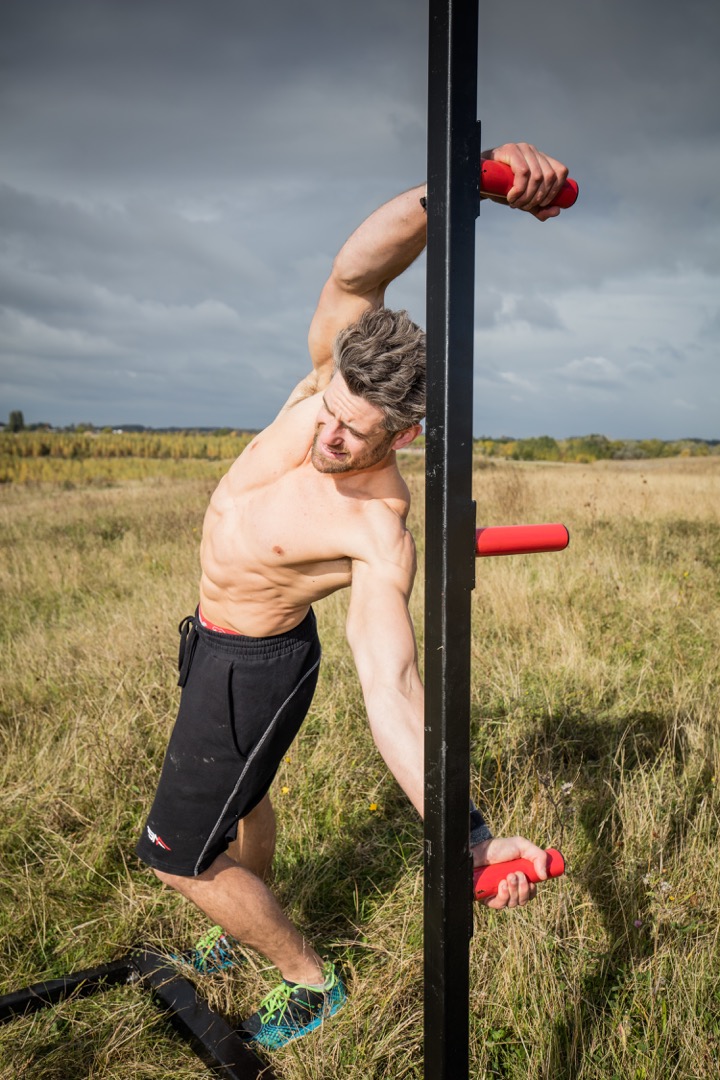
3. That First ‘Oh’ Feeling
This might seem like a bit of an odd step or instruction, but when you get that feeling of, ‘Oh, I felt something,' you’ll know exactly what I mean!
It’s when trying to kick your legs up into a tucked flag position, or when using a "spotter" as we do in our calisthenics workshops, where you’ll feel for a split second, the feeling of pushing and pulling with opposite arms where you’re holding yourself up. It might only be 0.1 seconds and the untrained eye can’t see it, but you'll feel it!
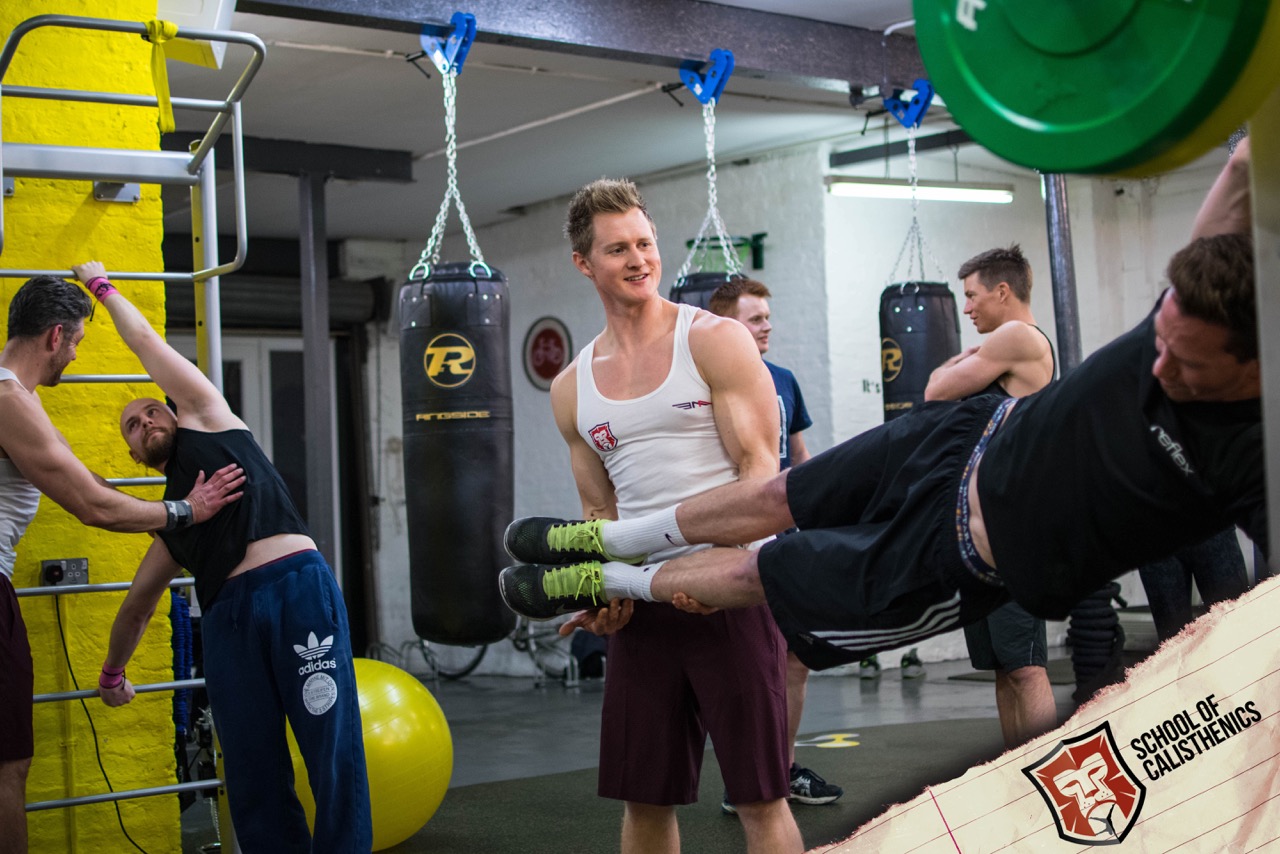
4. Strengthen Your Weakness
We can break the Human Flag down into 3 strength areas: Pulling arm, pushing arm, and top-side oblique strength. It is very important to understand which area(s) are your weakest so you can focus your efforts there.
If your pulling strength is weak, work on your wide overhand pull-ups. If it’s your pushing strength, work on your dips, but try an externally rotated position rather than neutral on parallel bars. If you need to build your oblique strength, try side lying leg raises off a bench or using a stability ball (see video below). These are just a couple of our favourites.
5. Practice Both Sides!
One side is likely to feel better or stronger than the other, but don’t fall into the trap of only training one way. If you do, you will cause yourself and your clients all sorts of asymmetrical muscular issues!
Want to learn more? Our human flag training e-book outlines in detail all of these steps, including video tutorials of the exercises you need to develop both the neuromuscular patterning and strength to perform the Human Flag. Could you and your clients be only 7 weeks away from nailing your first human flag?




